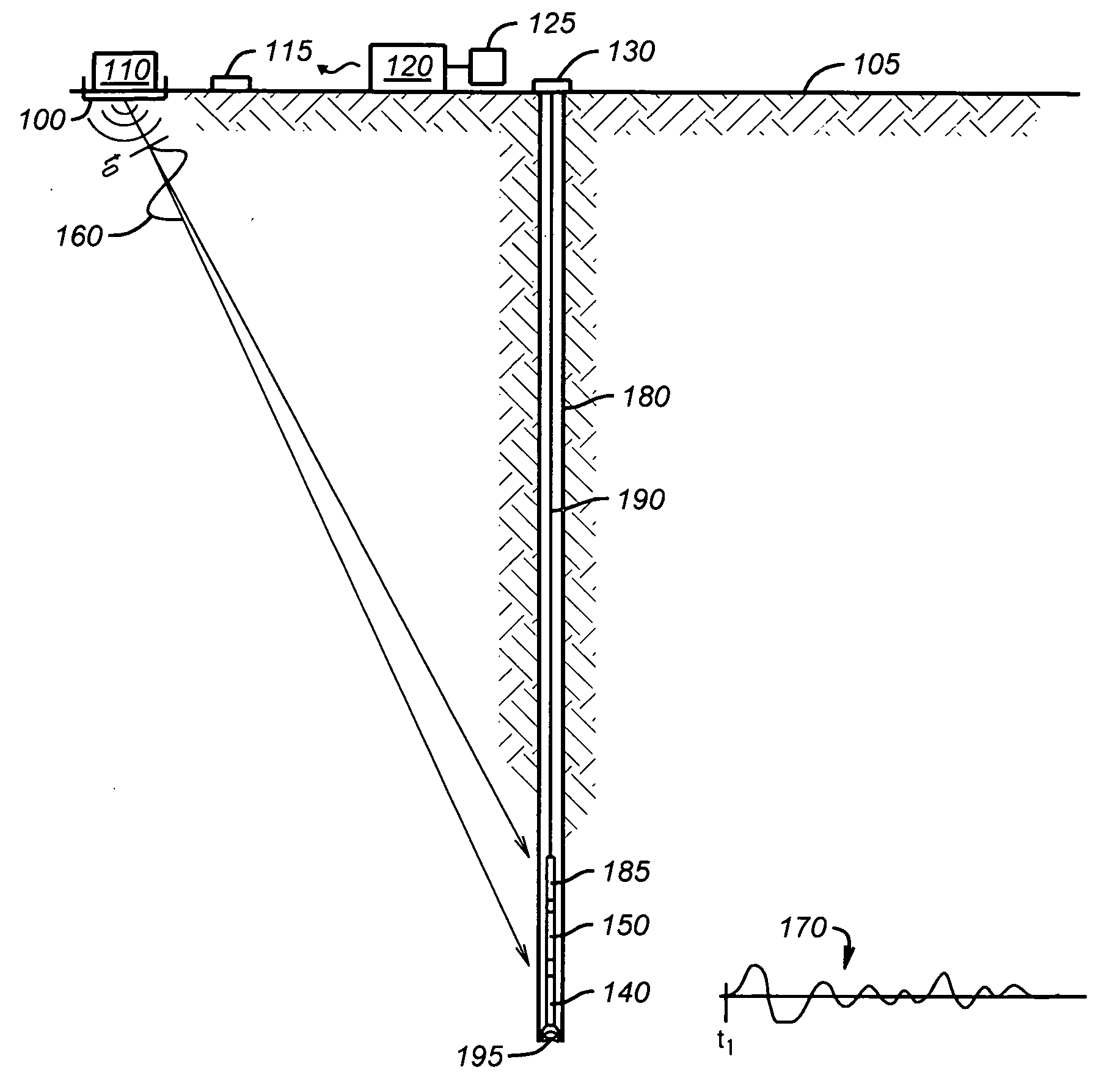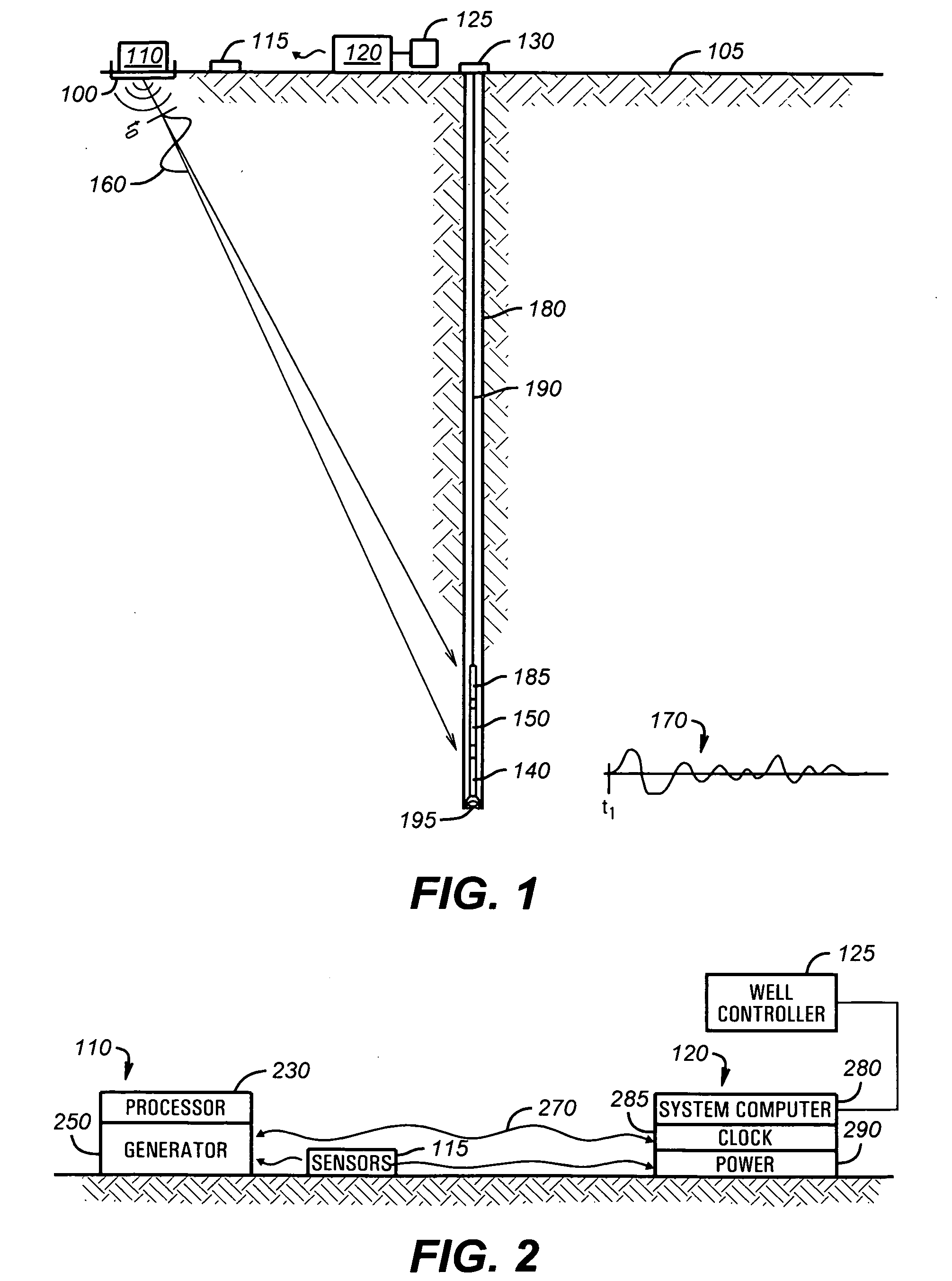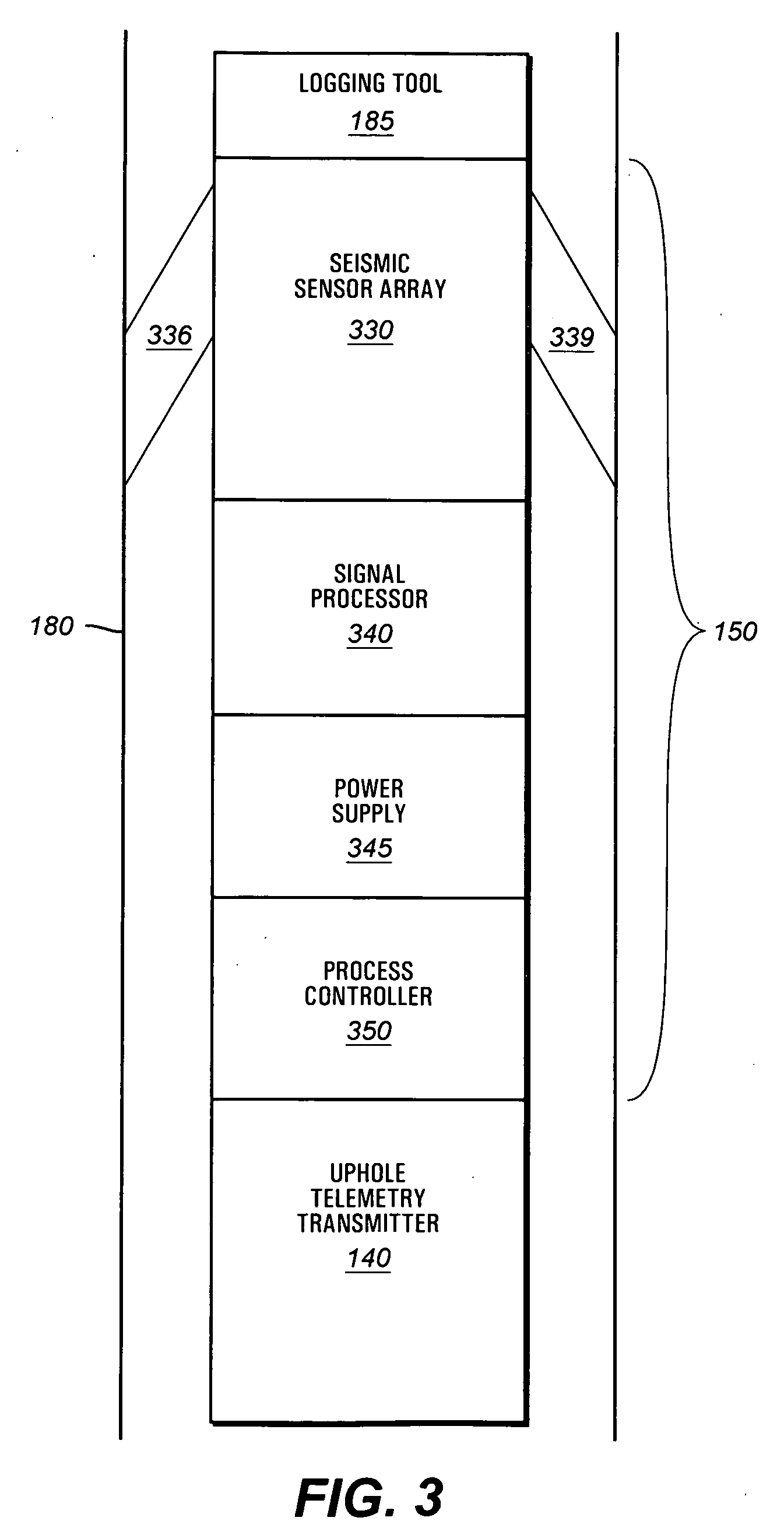Vertical seismic profiling method utilizing seismic communication and synchronization
a technology of seismic communication and synchronization, applied in the field of while drilling vertical seismic profiling (vsp) methods and equipment, can solve the problems of insufficient accurate time-keeping in the downhole tool, new methods have suffered from limitations, and the error accumulation of seismic travel time measurements can be very detrimental to the vsp processing and resultan
- Summary
- Abstract
- Description
- Claims
- Application Information
AI Technical Summary
Benefits of technology
Problems solved by technology
Method used
Image
Examples
Embodiment Construction
[0054]Referring to FIG. 1, a borehole 180 contains a drilling string assembly 190 connected to a wellhead equipment ensemble 130. A controllable while-drilling VSP seismic receiver / processor tool 150 (called VSP receiver in this document) is located deep in the borehole 180 at the lower end of the drilling string assembly 190. At the or near the earth's surface 105, a repeatable seismic source system 110 (called seismic source hereafter) is located at a fixed site 100. Seismic source 110 generates seismic signals 160 in response to commands from a VSP system controller 120. Seismic-sensor system 115 monitors the seismic signals 160 and any seismic emanations from the vicinity of the borehole.
[0055]VSP system controller 120 provides an operable interface between the seismic source 110 and a surface operator. In the preferred embodiment, the VSP system controller accepts commands from the operator such as by a keyboard or data entry link. The VSP system controller then executes the co...
PUM
 Login to View More
Login to View More Abstract
Description
Claims
Application Information
 Login to View More
Login to View More - R&D
- Intellectual Property
- Life Sciences
- Materials
- Tech Scout
- Unparalleled Data Quality
- Higher Quality Content
- 60% Fewer Hallucinations
Browse by: Latest US Patents, China's latest patents, Technical Efficacy Thesaurus, Application Domain, Technology Topic, Popular Technical Reports.
© 2025 PatSnap. All rights reserved.Legal|Privacy policy|Modern Slavery Act Transparency Statement|Sitemap|About US| Contact US: help@patsnap.com



